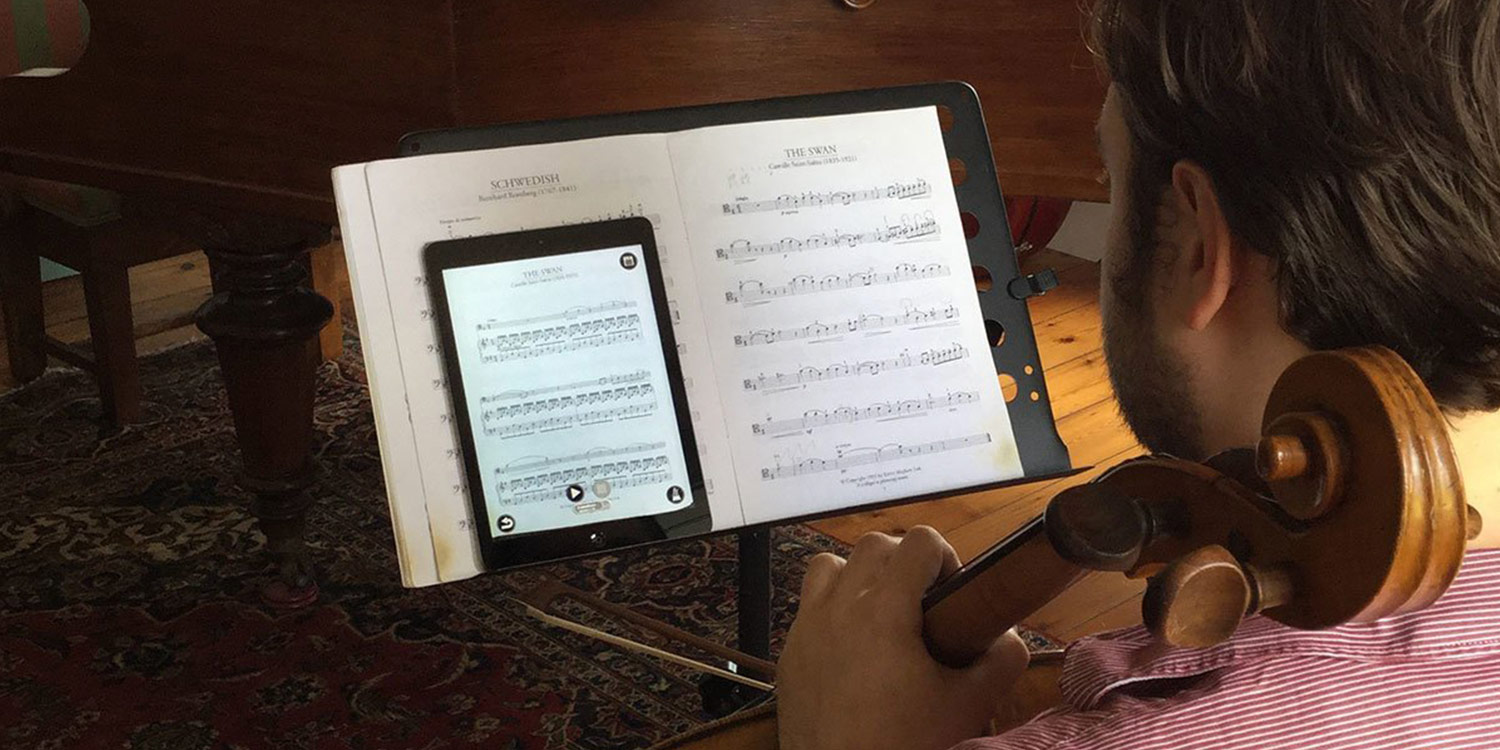Who needs an accompanist? This smart app can play any piece of sheet music for you
Price: Free
Subscription: $4 / £4 per month
Version: 2.70
Size: 89.8 MB
Seller: Organum Limited
Platform: iPhone & iPad
PlayScore 2 is an impressive app for iPhone and iPad (and Android) that can feel downright magical to use. Utilizing powerful Optical Music Recognition (OMR) software, PlayScore can snap a picture of a piece of sheet music and play it almost instantly using a range of musical voices. It’s a great app for anyone learning an instrument, or singers who are in need of virtual accompaniment.
After installing PlayScore and activating a subscription, using the app couldn’t be simpler. Tap the camera icon in the bottom-right, snap your score, and wait for the app to perform its seconds-long processing. PlayScore will then play through the piece using a piano voice by default.
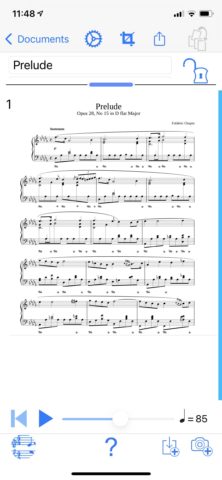
PlayScore.
Along the bottom of the screen is a slider which can be used to adjust the playback tempo – typically, the BPM is notated at the top of a piece of sheet music, though PlayScore can’t parse this information out on its own. In the bottom-right corner is a stave icon – tapping it allows users to configure the voices used for different staves in a piece of music, which is perfect for pieces which have a vocal line running over the top or a bass part that warrants a different sound.
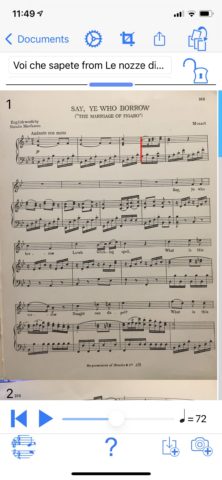
A scanned piece of sheet music.
There’s an orchestra-wide selection of digital voices – from trumpets or violins, flutes, pipe organs, and even a string ensemble. In truth, some sound better than others, although none sound quite like the real thing. Though the sounds don’t match the quality of something like Garageband, PlayScore isn’t designed for making slick recordings, and its tones are plenty good enough for educational or backing track purposes.
Even more useful, users can access transpose buttons here, which allow you to shift the scanned music up or down through semitone intervals. Again, this is something which singers will love – if a piece of music is slightly outside your range, PlayScore’s transpose feature will help make the piece feel more accessible and comfortable. You can also tweak the volume of individual voices, too, which is a useful addition.
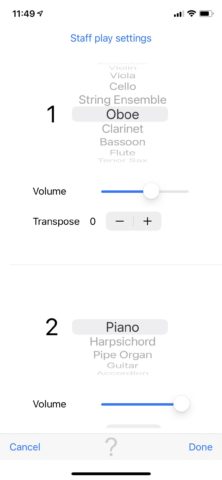
Custom voices.
More often than not, PlayScore does a decent job of scanning and playing music. Of course, the simpler the piece, the more accurate the playback. The app intelligently ignores handwritten notations, which is useful – you can also crop your scanned image or rename it. Further settings include auto transposition, additional staves, and a swing option for users scanning in jazz and blues.
Some of the most powerful features of the app include the ability to to export PDFs from your scans and even make MusicXML or MIDI files if you’re so inclined. Though this might not be needed for simple home practice, anyone in a band or looking to build up more complex playback from existing sheet music should be very happy these features are included. (Check out the PlayScore website for more on these use cases.)
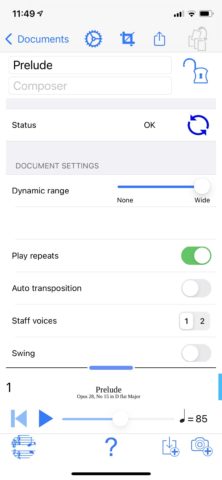
Settings to tweak.
It’s worth noting that while undoubtedly impressive, there are a few things which PlayScore seems to struggle with – and which you may notice when scanning in sheet music yourself. We noticed that PlayScore has some difficulty with tied notes – where individual notes of the same pitch are joined together to create one long, continuous note. In our testing, PlayScore read tied notes as two separate notes, which impacted upon the playback.
And while you can manually set the tempo of a piece, disappointingly PlayScore often overlooks speed notation positioned above bars or phrases. It stormed past a noted ritardando – which calls for a gradual slowing of tempo – a number of times in our testing, even when scanning in optimum conditions. This could be a major bugbear for singers using PlayScore as a makeshift accompanist, as you’ll need to manually adjust the tempo using PlayScore’s slider to achieve the desired effect.
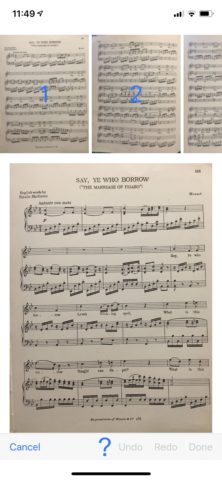
Multiple pages.
Finally, we found that PlayScore struggles to simulate the sustain pedal when using the piano voice, and that more generally, dynamics (how loud or soft a piece is meant to be played) were a bit sporadic. At certain times, PlayScore seemed to follow markings for an increase or decrease in volume. At others, individual notes were played unexpectedly loud for no apparent reason.
The app allows you to scan and play single-page scores for free, and if somebody else sends you a full score you can open that without paying too. Beyond that you’ll need to sign up for a monthly subscription ($4/£4) to unlock multi-page scanning and more.
Ultimately, despite a couple of bumps along the road, PlayScore is a genuinely impressive, thoughtful, and useful tool that any musician should consider downloading.
